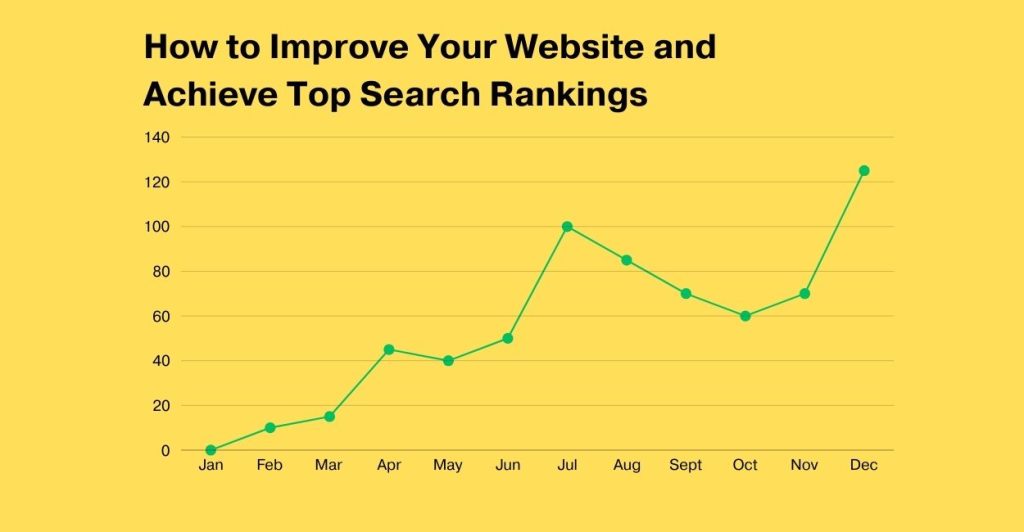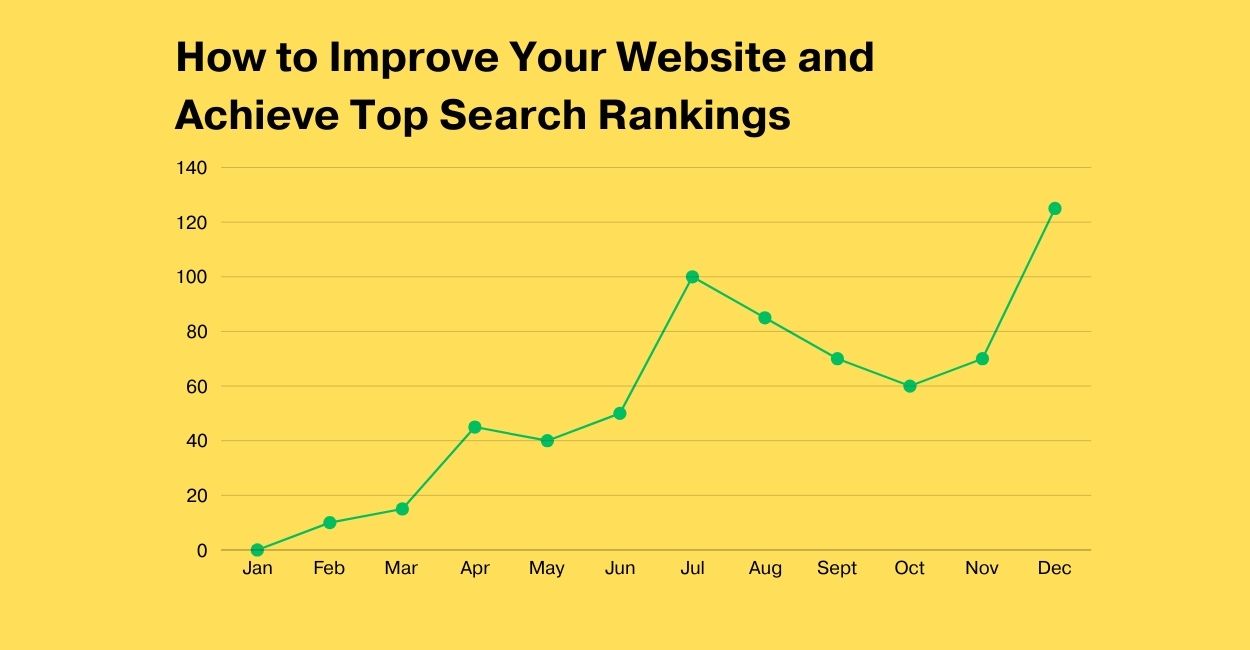In this digital time, the need for a website is not just a choice, but essential. But, owning a website isn’t sufficient. To be noticed in the online sphere your site must be designed to meet the needs of both people and search engines. Rankings on top searches in Google and the other major search engines could greatly boost the visibility of your website, generate higher traffic to your site, and ultimately increase the success of your company. In this article, we’ll look at practical methods to boost your site and get up the results on search engines.
1. Conduct Thorough Keyword Research
Keyword research is the basis of any effective SEO strategy. Knowing what your users are searching for can benefit you by modifying your material to satisfy their demands. Tools such as Google Keyword Planner, Ahrefs as well as SEMrush will benefit to identify keywords with high volume with a low level of competition. Concentrate on the long-tail keywords because they typically have lower competition and draw more reputable visitors.
Tips for Effective Keyword Research:
- Choose the most important keywords and secondary ones that are relevant to your area of expertise.
- Study your competitors’ keyword strategies.
- Make use of keyword variations in order to avoid keyword stuffing.
- Use search intent as a guideline to develop material which responds to particular user inquiries.
2. Optimize On-Page SEO
On-page SEO is the process of optimizing each page on your website so that it ranks more highly in search engine results. This is a combination of material as well as HTML source code elements. Through optimizing these elements it will enhance your website’s appeal for both the user and search engines.
Key On-Page SEO Elements:
- Title Tags: Include your main keyword within the title tag Keep it shorter than 60 characters to allow for more prominent display on the search outcome.
- Meta Descriptions: Create appealing Meta Descriptions (150-160 characters) with keywords to make it easier to click.
- Header Tags (H1 H1, H2, 3) Use header tags to structure your material using header tags in order to increase accessibility as well as SEO.
- URL Structure: Try to keep URLs brief, informative and keyword-rich.
- Internal Linking: Connect to relevant pages on your website to boost accessibility and to spread the link equity.
3. Create High-Quality, Engaging substance
subject matter is the most important thing in the field of SEO. The search engines favor sites with informative, valuable and entertaining material. The regular publication of new material can help keep your website current and trustworthy to the search engines.
Strategies for Material Creation:
- Blogging: Blog posts which address the most common issues or issues encountered by your followers.
- Video Content Include videos in your material strategy as they will rise engagement as well as the duration of your stay.
- Infographics are visual material like infographics may improve shares as well as backlinks.
- Guest Posting: Create guest blogs for websites that are reputable to get backlinks as well as improve the authority of your website.
4. Improve Website Loading Speed
The speed of your site is a crucial element in the user experience as well as SEO. An unresponsive website could cause more bounces, which can negatively impact the rankings of your website. Utilize tools such as Google PageSpeed Insights or GTmetrix to evaluate the speed of your website and pinpoint areas that could be improved.
Tips to Boost Page Speed:
- Reduce and optimize images, without losing quality.
- Cut down on HTTP requests by decreasing the number of elements that appear on every page.
- Make use of browser caching in order to store local static files.
- You can enable Gzip compression to minimize files’ size. CSS, HTML, and JavaScript file.
5. Optimize for Mobile Devices
Since the vast majority of internet visitors now arriving on smartphones, it’s vital to warrant that your site is mobile-friendly. Google makes use of mobile-first indexing which relies on an app on mobile devices to index your website to rank and index your site.
Mobile Optimization Best Practices:
- Choose a design that is responsive and adjusts to different screen dimensions.
- Make sure that links and buttons are easy to click even on screens with smaller sizes.
- Stay clear of annoying pop-ups that could make mobile users angry.
- Make sure your website is tested on various devices and web browsers to ensure that it is compatible.
6. Enhance User Experience (UX)
An enjoyable user experience is vital to keeping visitors on your site and thus enhancing the quality of your SEO. Search engines such as Google use the bounce rate and time spent on the site and the number of pages per session in determining ranking.
Ways to Improve UX:
- Simple Navigation It is easier for users to locate the data they require together a an easy-to-read navigation menu.
- Improve Readability: Make use of shorter paragraphs, and bullet points as well as lots of white space to create material easier to digest.
- Enhance Accessibility: Make sure that your site is accessible to everyone, even people with disabilities. Include alt tags in pictures as well as help in providing video transcripts.
- Utilize Clear Calls To Action (CTAs) to guide users to take an decision with clear, convincing CTAs.
7. Build Quality Backlinks
Inbound links, also known as backlinks are among the factors most important to the search engine ranking. If trusted websites link to your content they signal to search engines that your website is credible and reliable.
Effective Link-Building Techniques:
- Guest blogging: Create high-quality guest blogs for websites that are relevant within your field.
- Broken Link Construction: Search for broken links on other websites and recommend your material to replace them.
- Resources Pages: Make contact with webmasters through resource pages. They may benefit from an online hyperlink on your material.
- Social Media Promotion: Post your material via social media sites to improve exposure and draw natural backlinks.
8. Monitor and Analyze Your SEO Performance
SEO is a process that continues and requires constant checking and adjusting. Make use of analytics tools such as Google Analytics and Google Search Console to analyze your website’s performance, spot any issues and make data-driven decision making.
Key Metrics to Track:
- Organic Traffic: Observe the amount of people who are visiting via search engines.
- Bounce Rate: Determine the percentage of your visitors that quit your website after having seen just one webpage.
- Conversion Rate: Determine how many people take the desirable action, for example buying something or signing up for the newsletter.
- Keyword Rankings: Monitor the rank of your website on your keywords of choice over time.
Conclusion
Making your site more effective and getting high rankings on search engines isn’t a one-time event. It’s a continual endeavour that demands dedication to strategy, planning, and adapting to the ever-changing algorithms of search engines. Implementing the methods described in this article, you’ll be able to increase your site’s performance, boost the number of visitors and eventually actually achieve the payoff you’re hoping to achieve.
Be aware that SEO is a long-term endeavour. Keep at it, keep learning and adapt the strategies you employ as required. By putting in the effort consistently your site can climb in the rankings and reap the advantages of having top results in search engine rankings.










